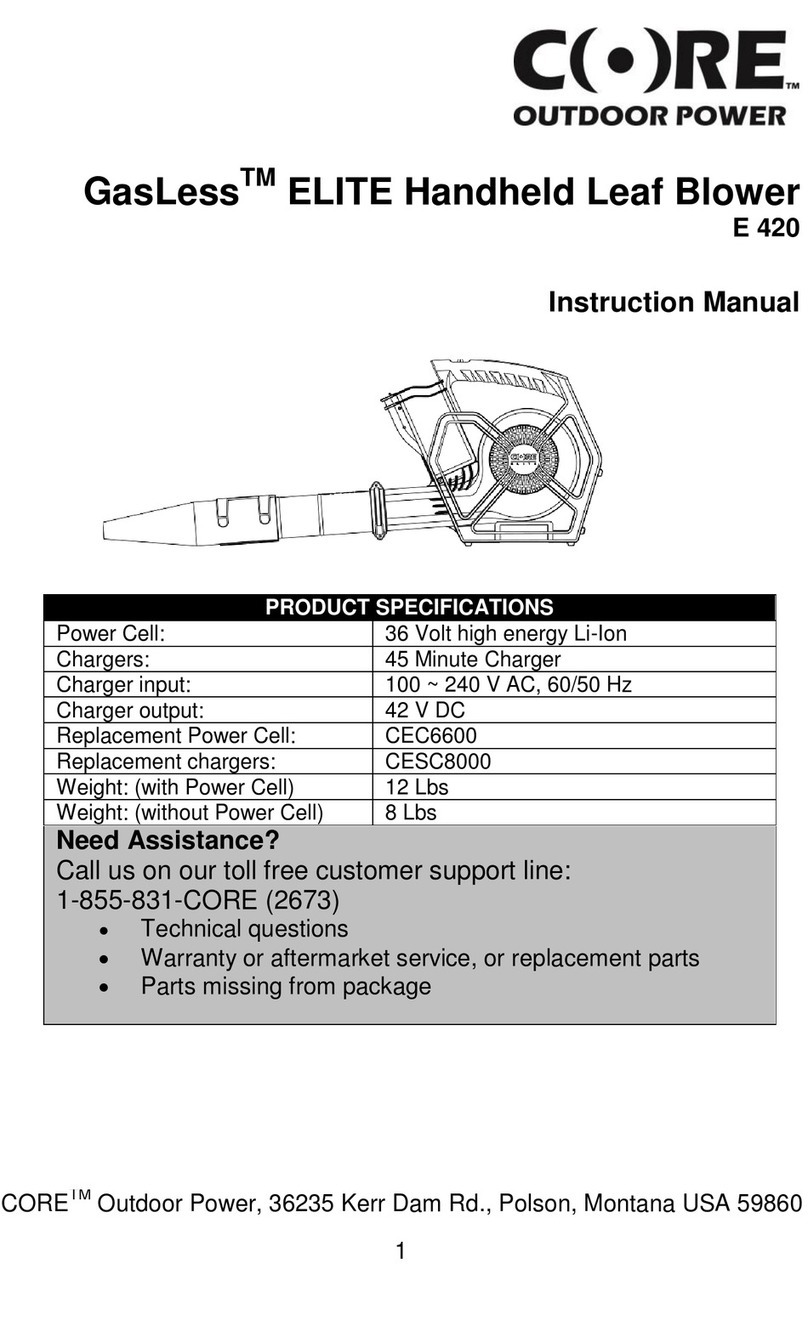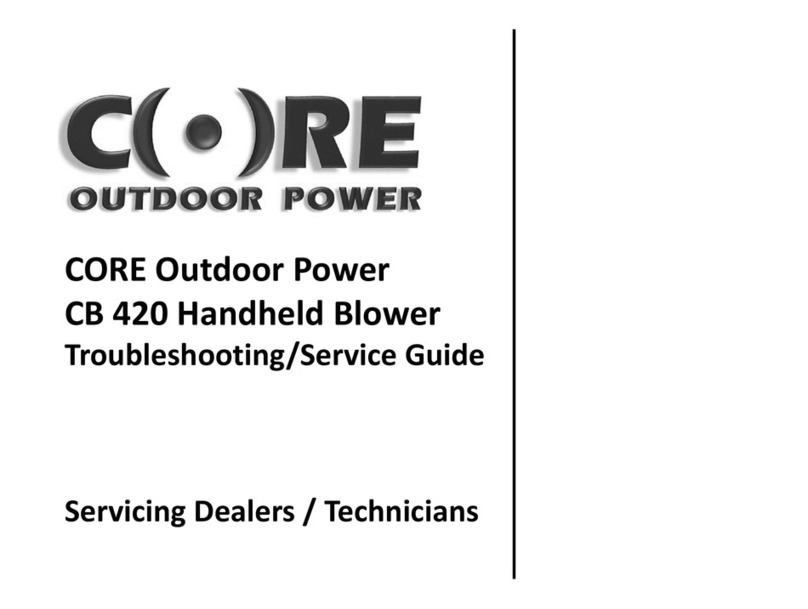
8
Cover as much of your body as possible
to help protect you from debris and
pieces of toxic and allergenic plants
being thrown by the blower.
WARNING: Use
hearing protection. Core
recommends the use of
hearing protection (e.g. ear plugs or ear
mufflers) to protect your hearing,
particularly if the blower is used for
extensive periods or if the surrounding
environment of operation exposes the
operator to loud noises. When wearing
hearing protection, you will have
impaired ability to hear alarms,
warnings and shouts from approaching
people or approaching vehicles. Be
extra diligent and observant of hazards
and bystanders when wearing hearing
protection devices. When someone
approaches, turn the blower OFF
immediately.
WARNING: The high
velocity of the air flow coming
through the nozzle will throw
objects and debris violently and the
objects and debris will ricochet in all
directions. You or bystanders can be
blinded or injured. Keep children,
bystanders, pets and other animals at
least 50 feet (15 meters) away from the
operating blower. Turn the blower OFF
immediately if approached, or if you are
approaching such bystanders.
Bystanders should be encouraged to
wear eye protection, even if they are
kept at a distance.
Thrown objects may also ricochet and
strike the operator or bystander.
Utilize extra caution, when the blower is
being used near, or on paved or hard
surfaces, as pieces of metal, concrete,
brick, stones, gravel, sand, glass, sticks
and other objects can be thrown at high
speed and force and such objects can
be thrown, skip along or ricochet long
distances off of hard surfaces.
Do not use this blower for sweeping
debris that may contain hard objects,
e.g. pebbles, stones, sticks, glass,
metal, etc. as such hard objects can be
thrown with great force and cause injury
to the operator or bystanders, and / or
damage property, e.g., screens,
windows, building siding, glass doors,
or vehicles.
NOTICE: Avoid operating the blower
near property that can be easily
damaged by thrown or ricocheting
objects such as screens, windows,
building siding, glass doors and
vehicles.
WARNING: Always
wear breathing protection
when operating the blower. Bystanders
should be encouraged to wear
breathing protection devices even if
they are kept at a distance as
hazardous dust can travel considerable
distances, especially if the dust is wind
blown.
WARNING: Know
what you are going to blow,
before you blow.
WARNING: Inspect the area to be
cleared for hazards before each use.
Remove any foreign objects such as
sticks, rocks, broken glass, nails, wire,
tools, toys, etc. which can be thrown by
the blower.
WARNING: If you are suspicious or
uncertain if the material that you are
considering blowing would cause
hazardous dusts, first, identify and
investigate the nature of the materials.
SPECIFIC SAFETY RULES
!
!
!
!






























